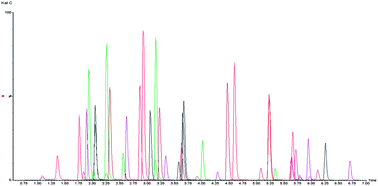
Mass spectral analysis of blood samples
Analysing blood samples for the presence of legal and illegal drugs can present a challenge to forensic scientists; blood is a complex matrix which requires cleaning up before analysis, and the standard tests tend to be specific to a single drug or drug class.
Lambert Sørensen and Jørgen Hasselstrøm from the Department of Forensic Medicine at Aarhus University, Denmark, have developed a rapid method for quantification of around 50 drugs and metabolites in whole blood samples. The process uses ultra-high-performance liquid chromatography tandem mass spectrometry (UPLC-ESI-MS/MS) and shows low limits of detection even with post-mortem blood samples, which are more difficult to analyse due to varying degrees of putrefaction.
The simple sample preparation procedure involves deproteinisation by methanol/acetonitrile and ultrafiltration of the extract, and the researchers used a 96-well format to obtain high sample throughput.
To know more, access the link below. This paper will be free to read for the next 10 days.
A high-throughput multi-class liquid chromatography tandem mass spectrometry method for quantitative determination of licit and illicit drugs in whole blood
Lambert K. Sørensen* and Jørgen B. Hasselstrøm
Anal. Methods, 2013,5, 3185-3193
DOI: 10.1039/C3AY40443A










